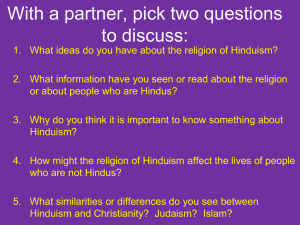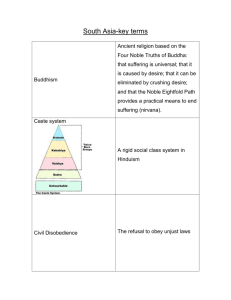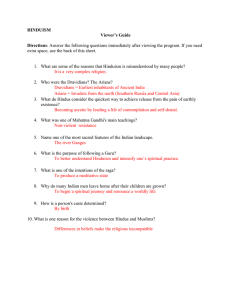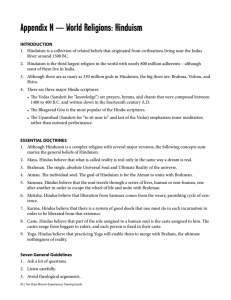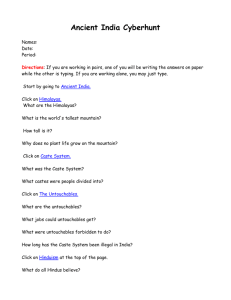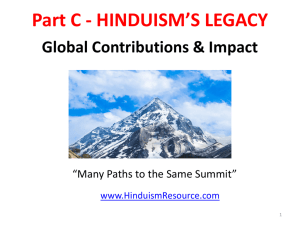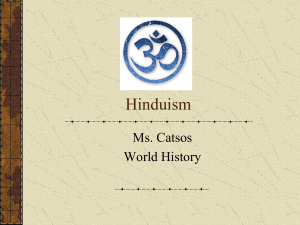Hinduism - Baltimore City Public School System
advertisement
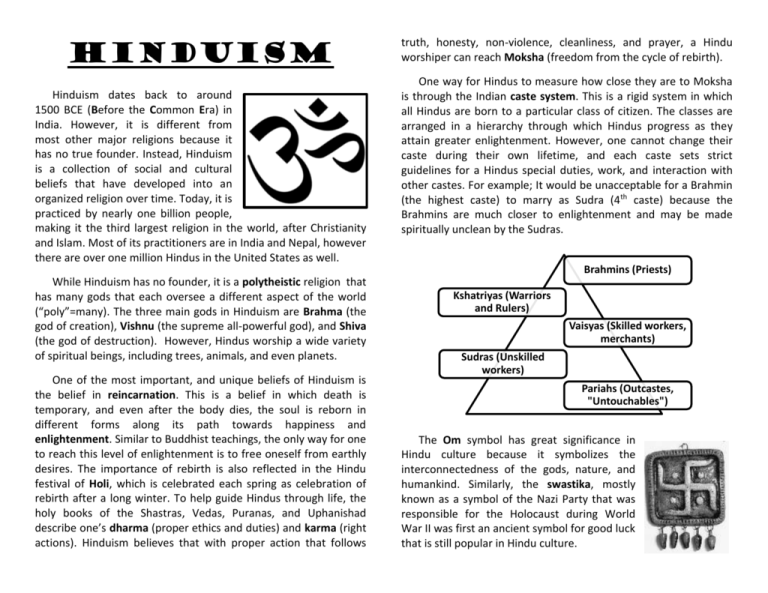
Hinduism Hinduism dates back to around 1500 BCE (Before the Common Era) in India. However, it is different from most other major religions because it has no true founder. Instead, Hinduism is a collection of social and cultural beliefs that have developed into an organized religion over time. Today, it is practiced by nearly one billion people, making it the third largest religion in the world, after Christianity and Islam. Most of its practitioners are in India and Nepal, however there are over one million Hindus in the United States as well. truth, honesty, non-violence, cleanliness, and prayer, a Hindu worshiper can reach Moksha (freedom from the cycle of rebirth). One way for Hindus to measure how close they are to Moksha is through the Indian caste system. This is a rigid system in which all Hindus are born to a particular class of citizen. The classes are arranged in a hierarchy through which Hindus progress as they attain greater enlightenment. However, one cannot change their caste during their own lifetime, and each caste sets strict guidelines for a Hindus special duties, work, and interaction with other castes. For example; It would be unacceptable for a Brahmin (the highest caste) to marry as Sudra (4th caste) because the Brahmins are much closer to enlightenment and may be made spiritually unclean by the Sudras. Brahmins (Priests) While Hinduism has no founder, it is a polytheistic religion that has many gods that each oversee a different aspect of the world (“poly”=many). The three main gods in Hinduism are Brahma (the god of creation), Vishnu (the supreme all-powerful god), and Shiva (the god of destruction). However, Hindus worship a wide variety of spiritual beings, including trees, animals, and even planets. One of the most important, and unique beliefs of Hinduism is the belief in reincarnation. This is a belief in which death is temporary, and even after the body dies, the soul is reborn in different forms along its path towards happiness and enlightenment. Similar to Buddhist teachings, the only way for one to reach this level of enlightenment is to free oneself from earthly desires. The importance of rebirth is also reflected in the Hindu festival of Holi, which is celebrated each spring as celebration of rebirth after a long winter. To help guide Hindus through life, the holy books of the Shastras, Vedas, Puranas, and Uphanishad describe one’s dharma (proper ethics and duties) and karma (right actions). Hinduism believes that with proper action that follows Kshatriyas (Warriors and Rulers) Vaisyas (Skilled workers, merchants) Sudras (Unskilled workers) Pariahs (Outcastes, "Untouchables") The Om symbol has great significance in Hindu culture because it symbolizes the interconnectedness of the gods, nature, and humankind. Similarly, the swastika, mostly known as a symbol of the Nazi Party that was responsible for the Holocaust during World War II was first an ancient symbol for good luck that is still popular in Hindu culture.
